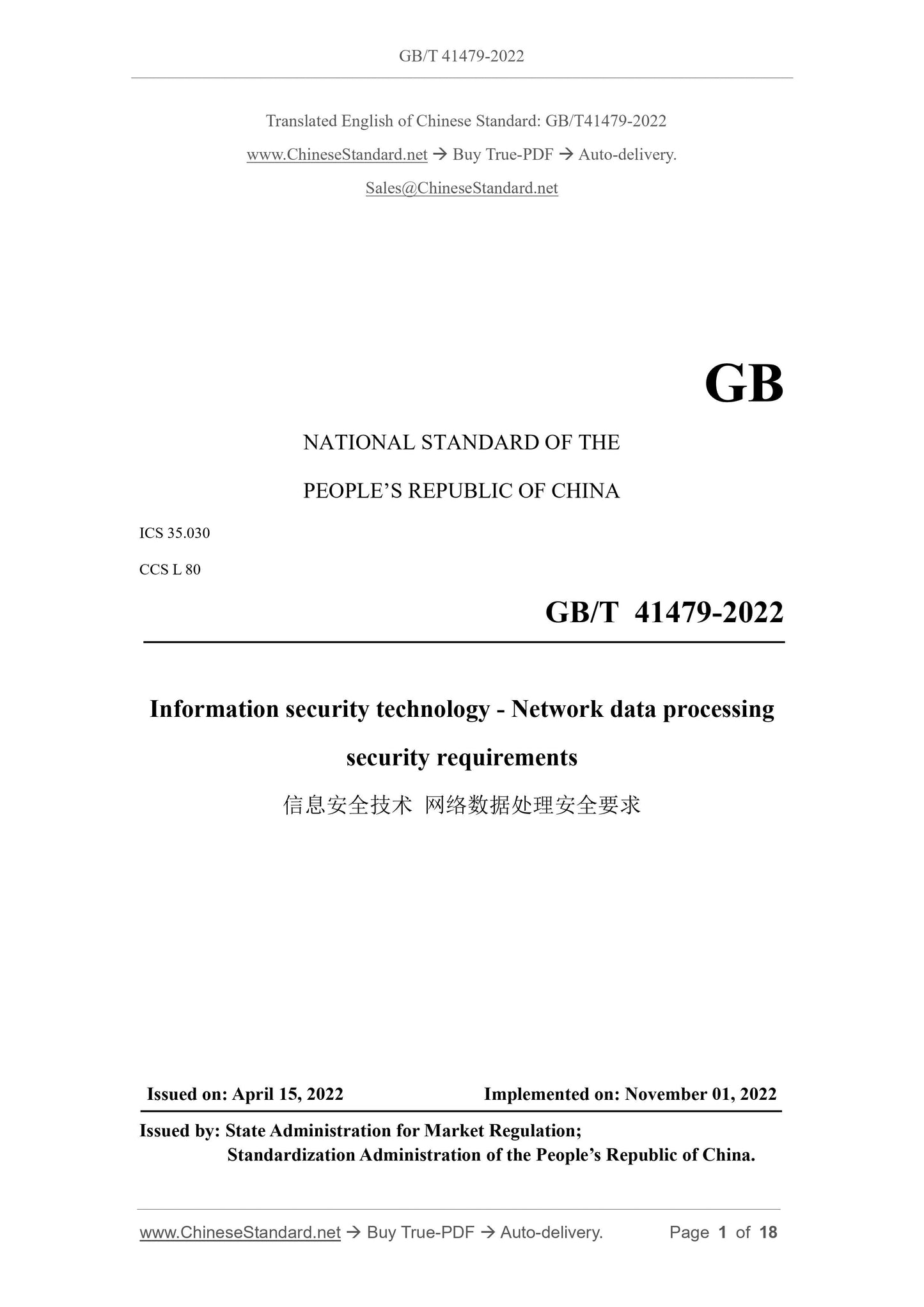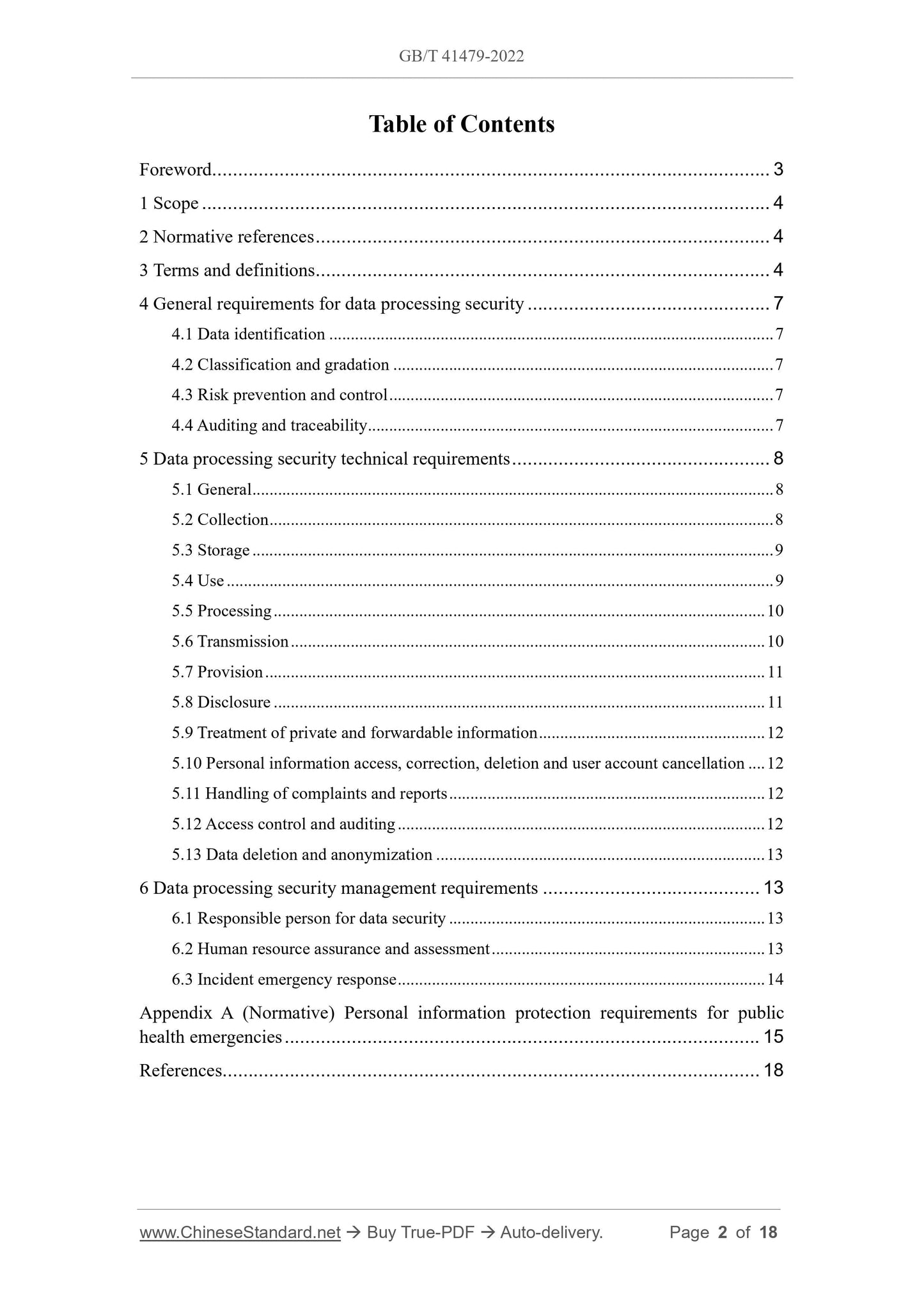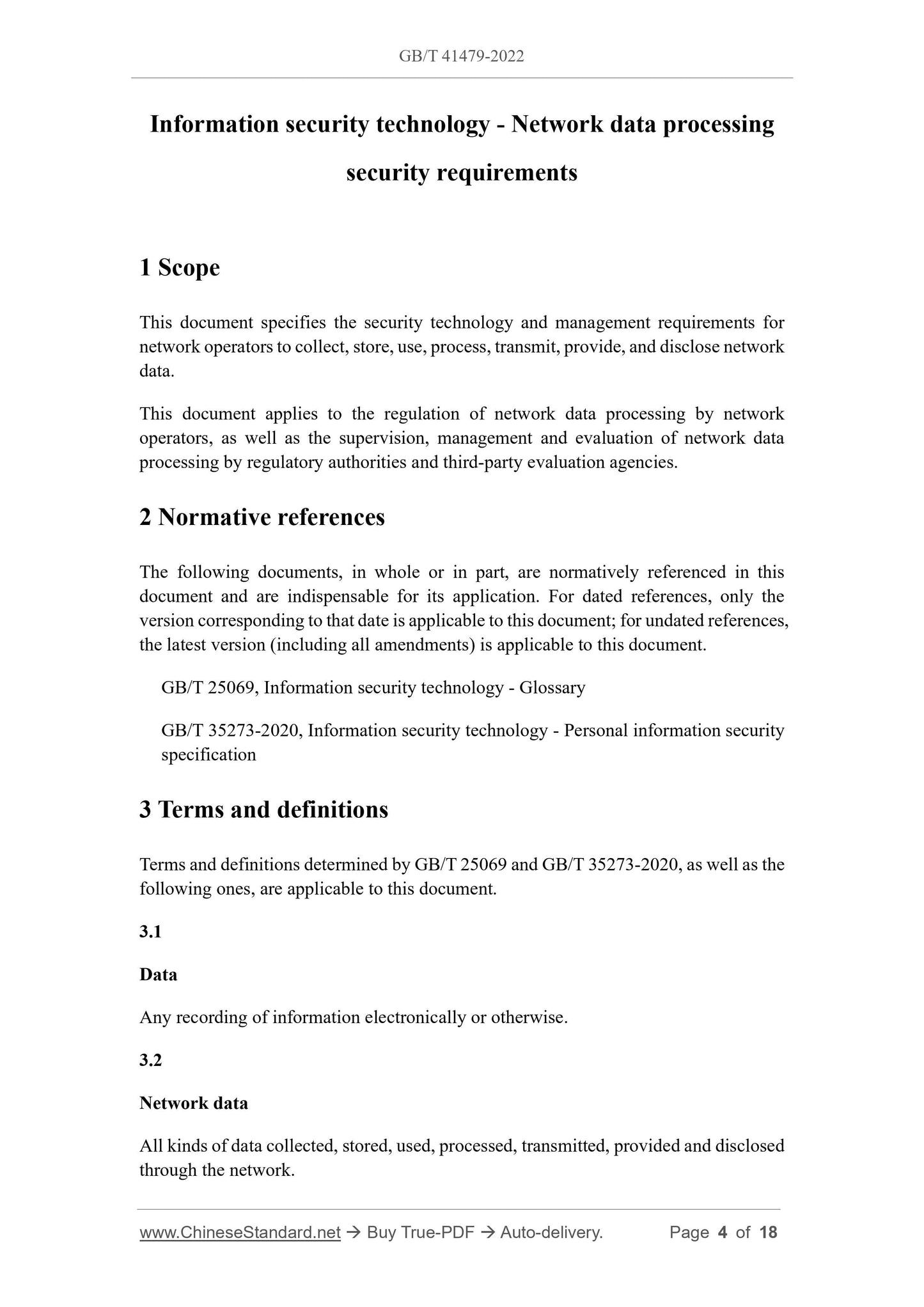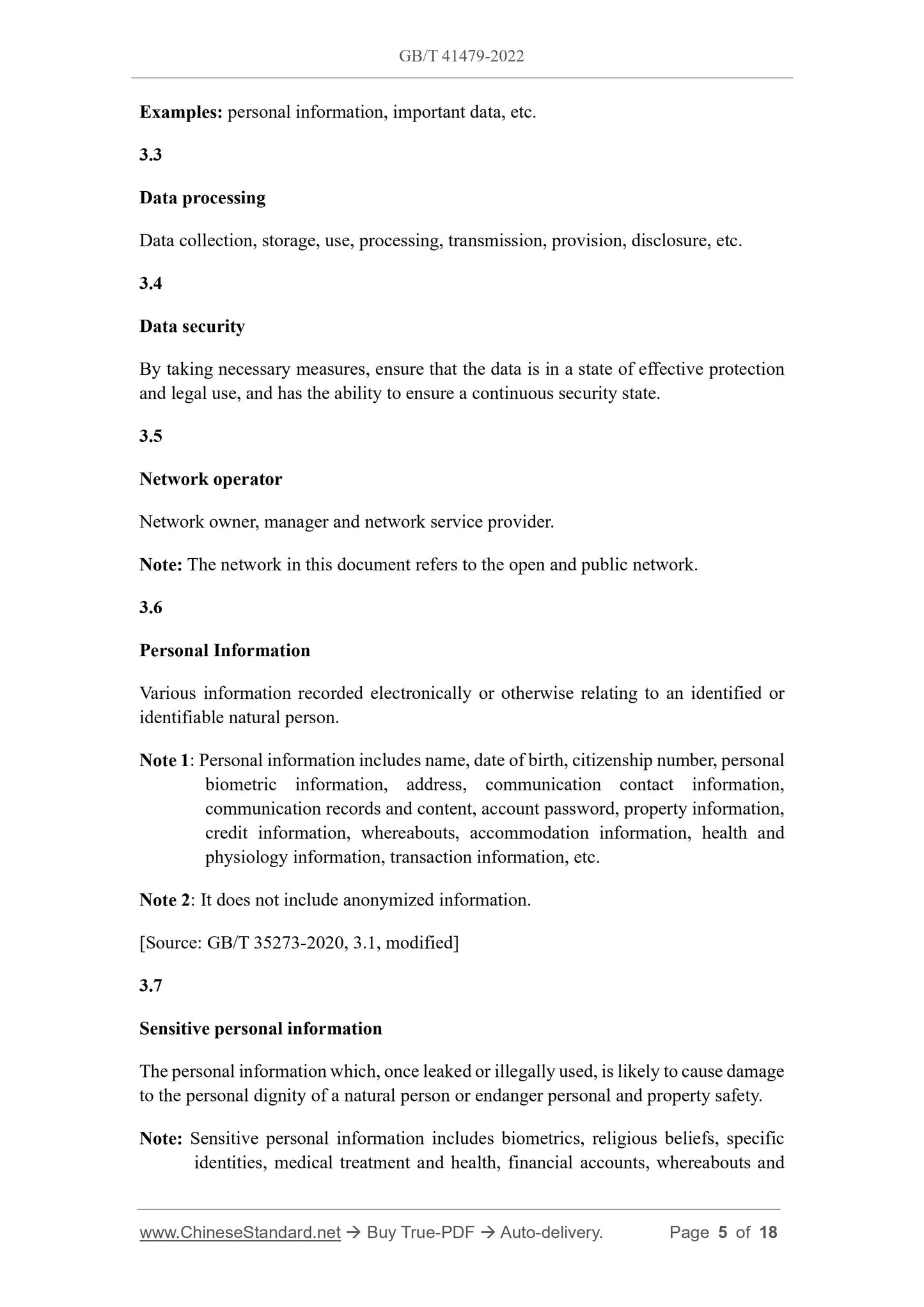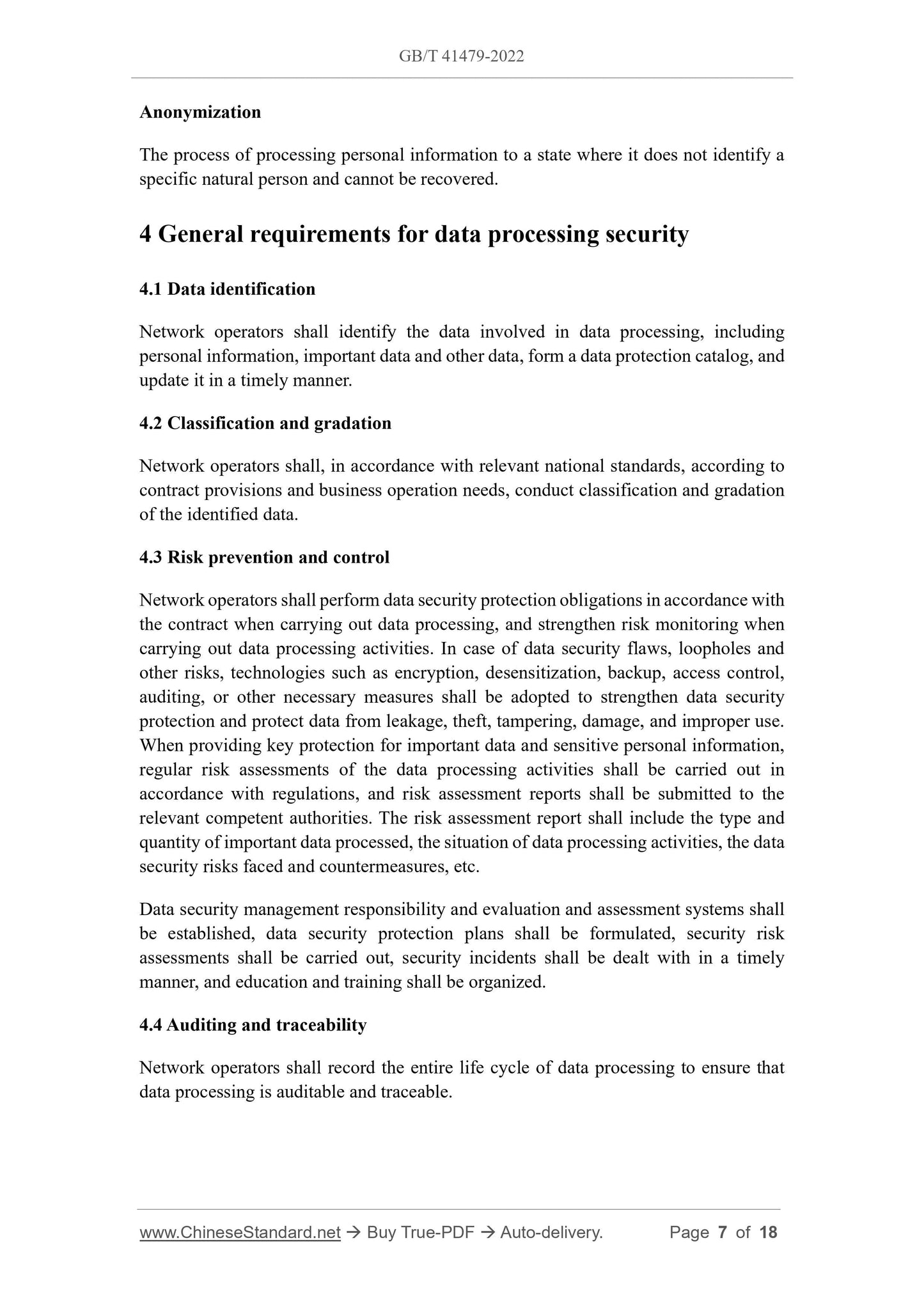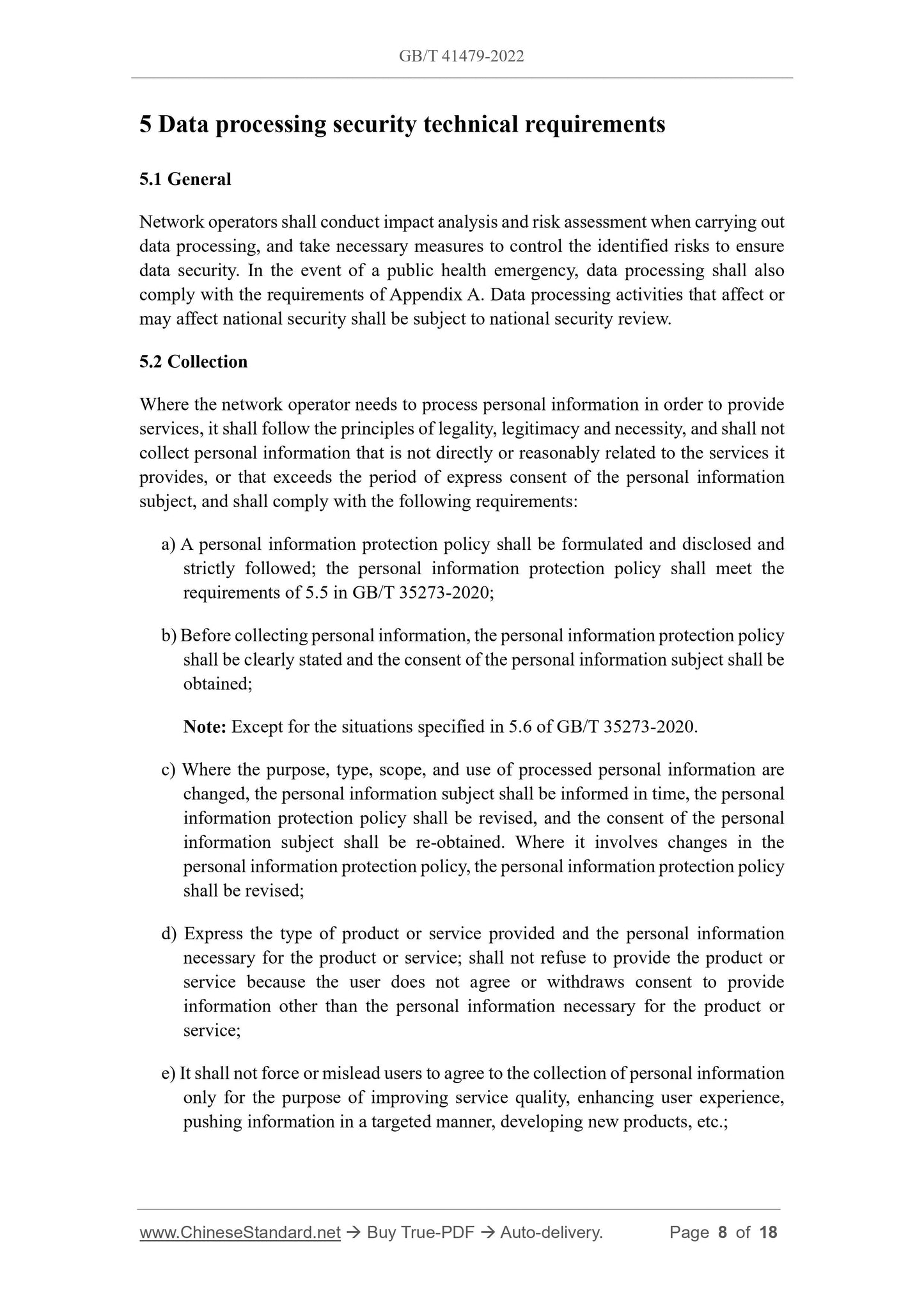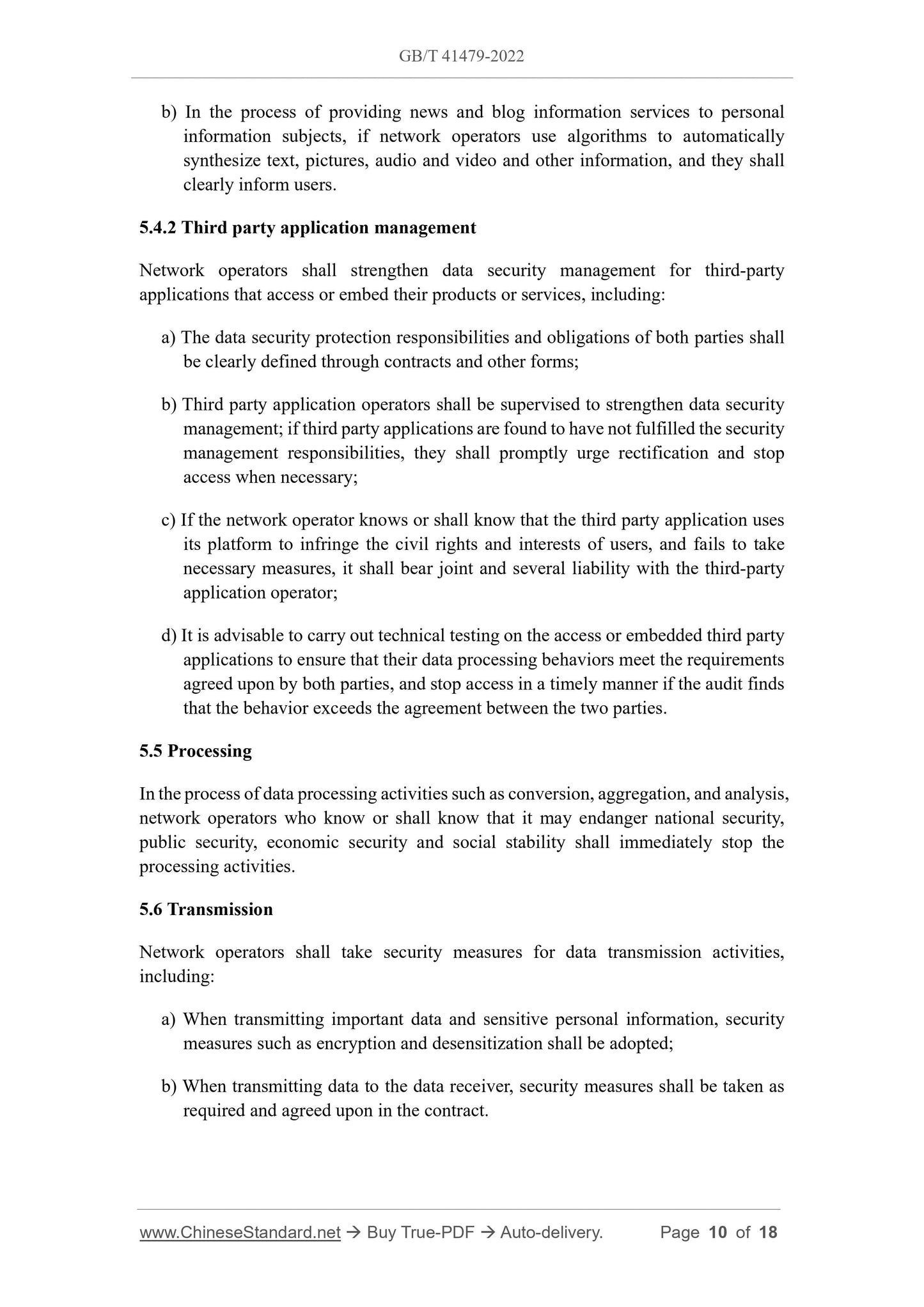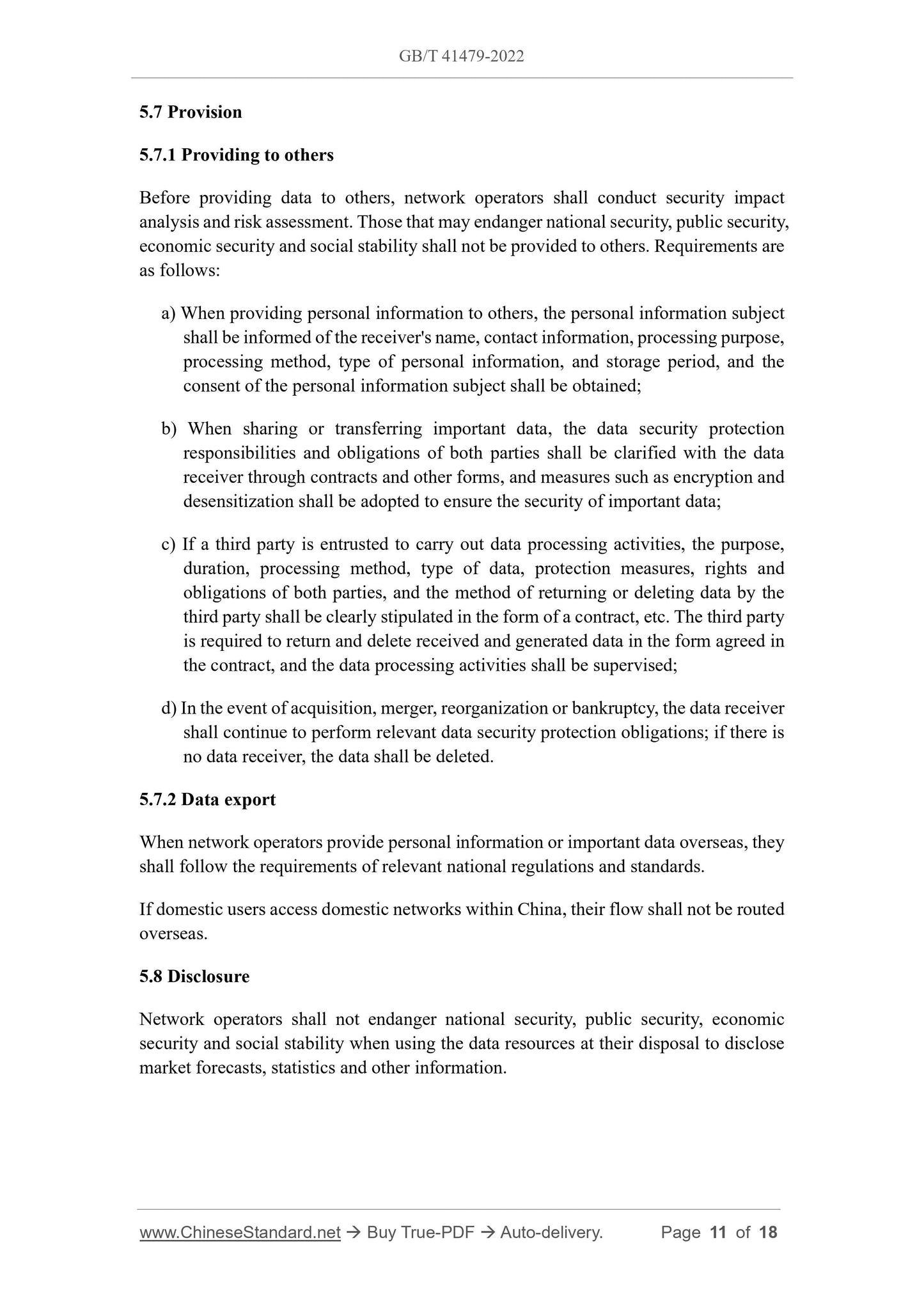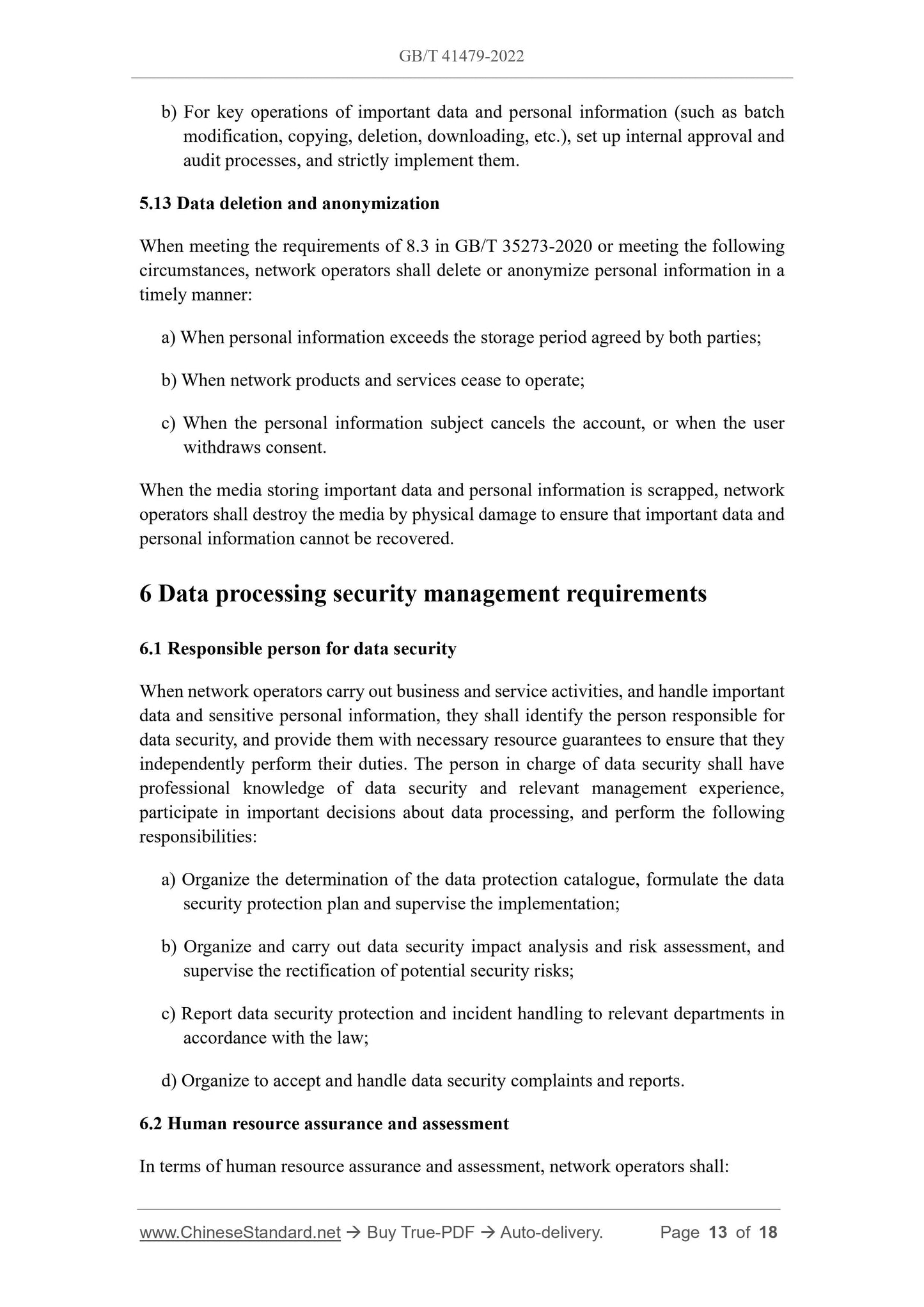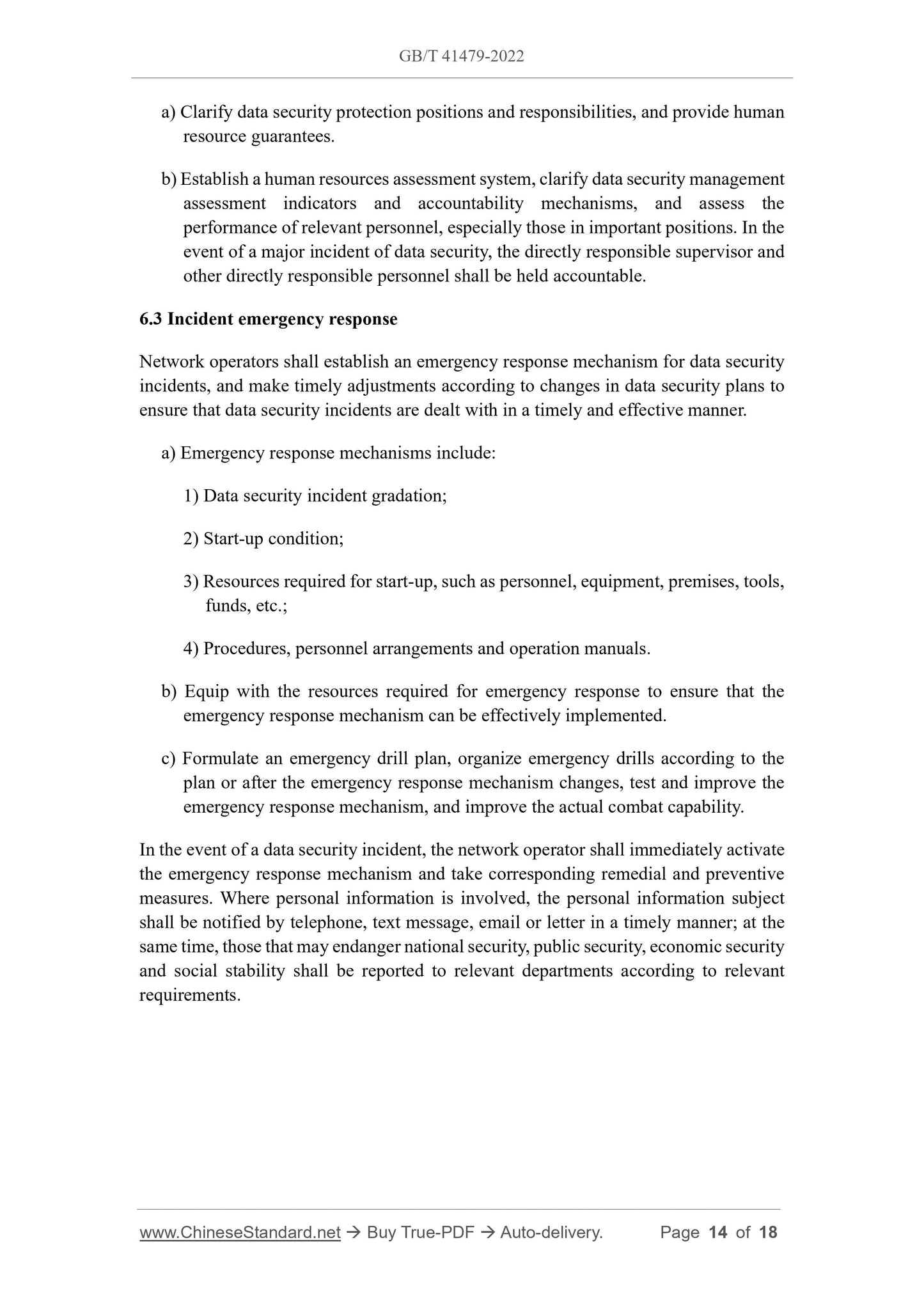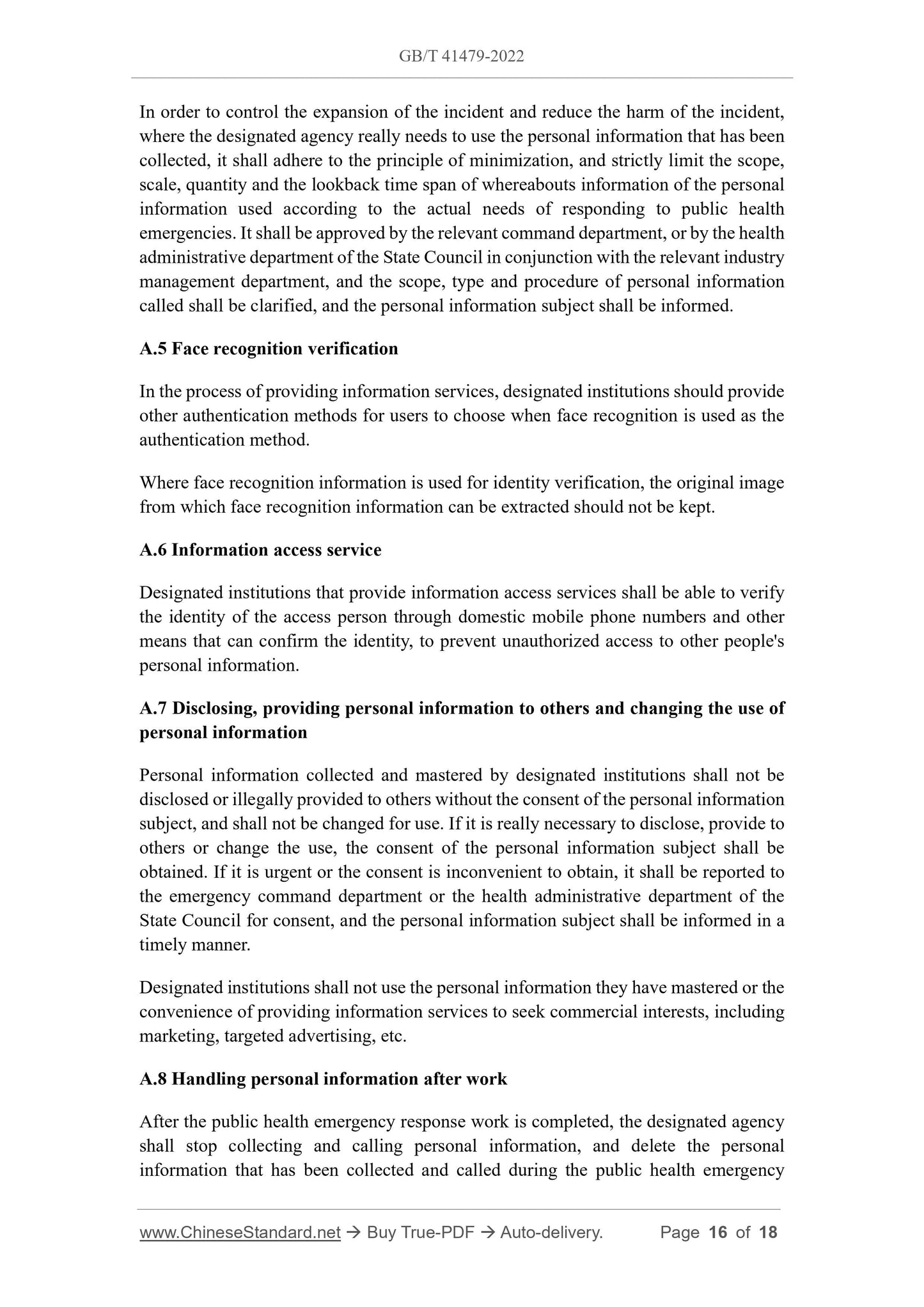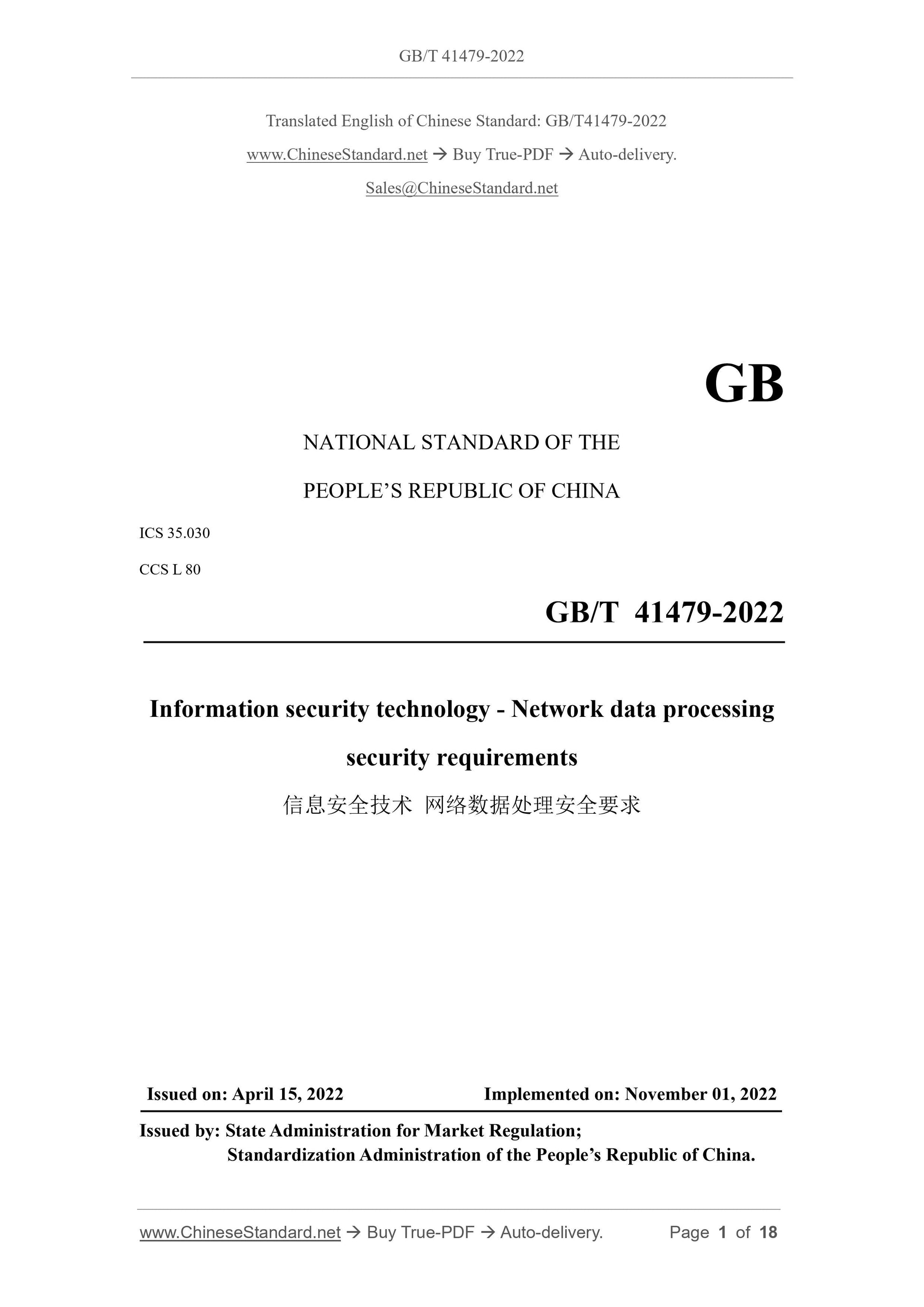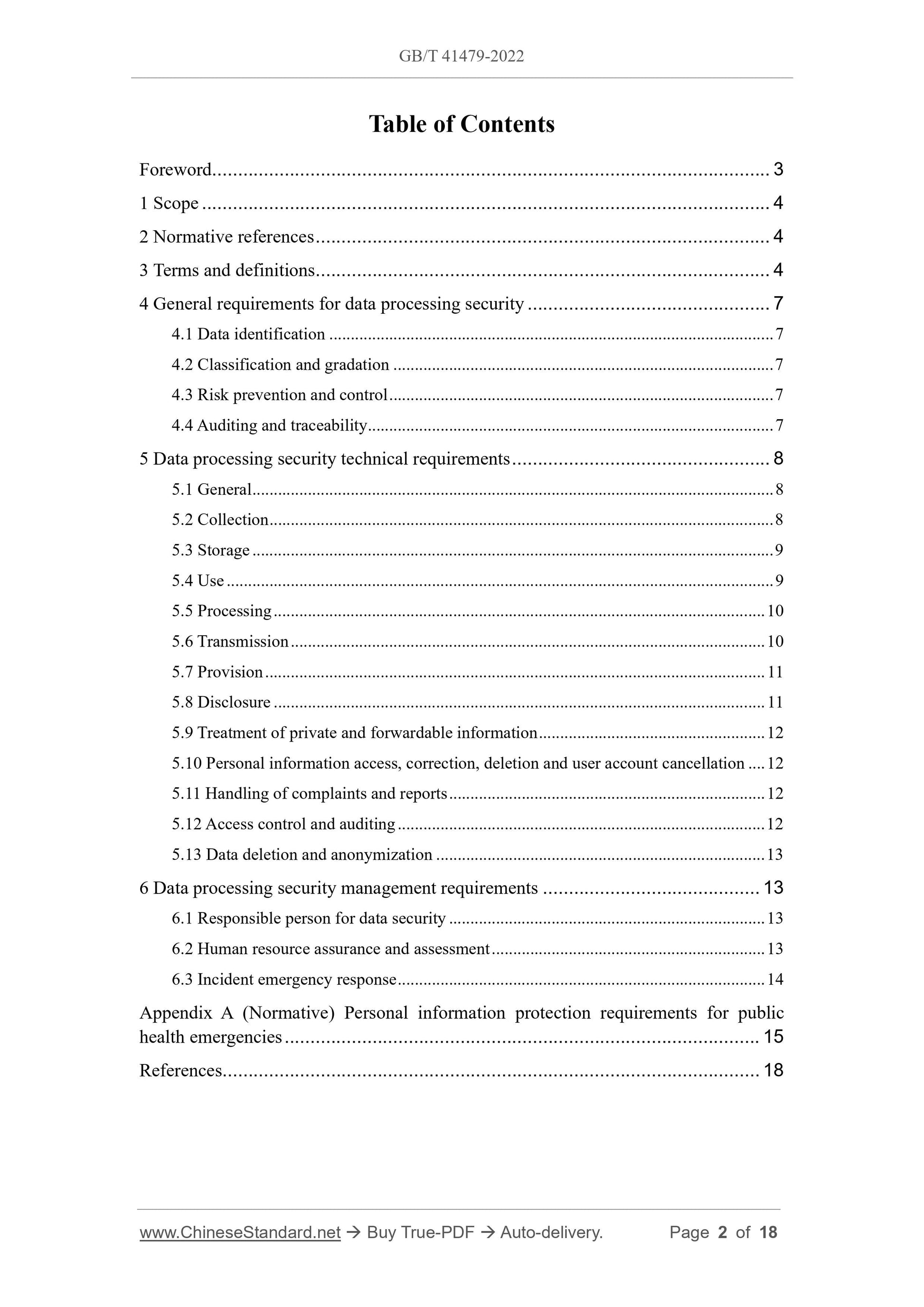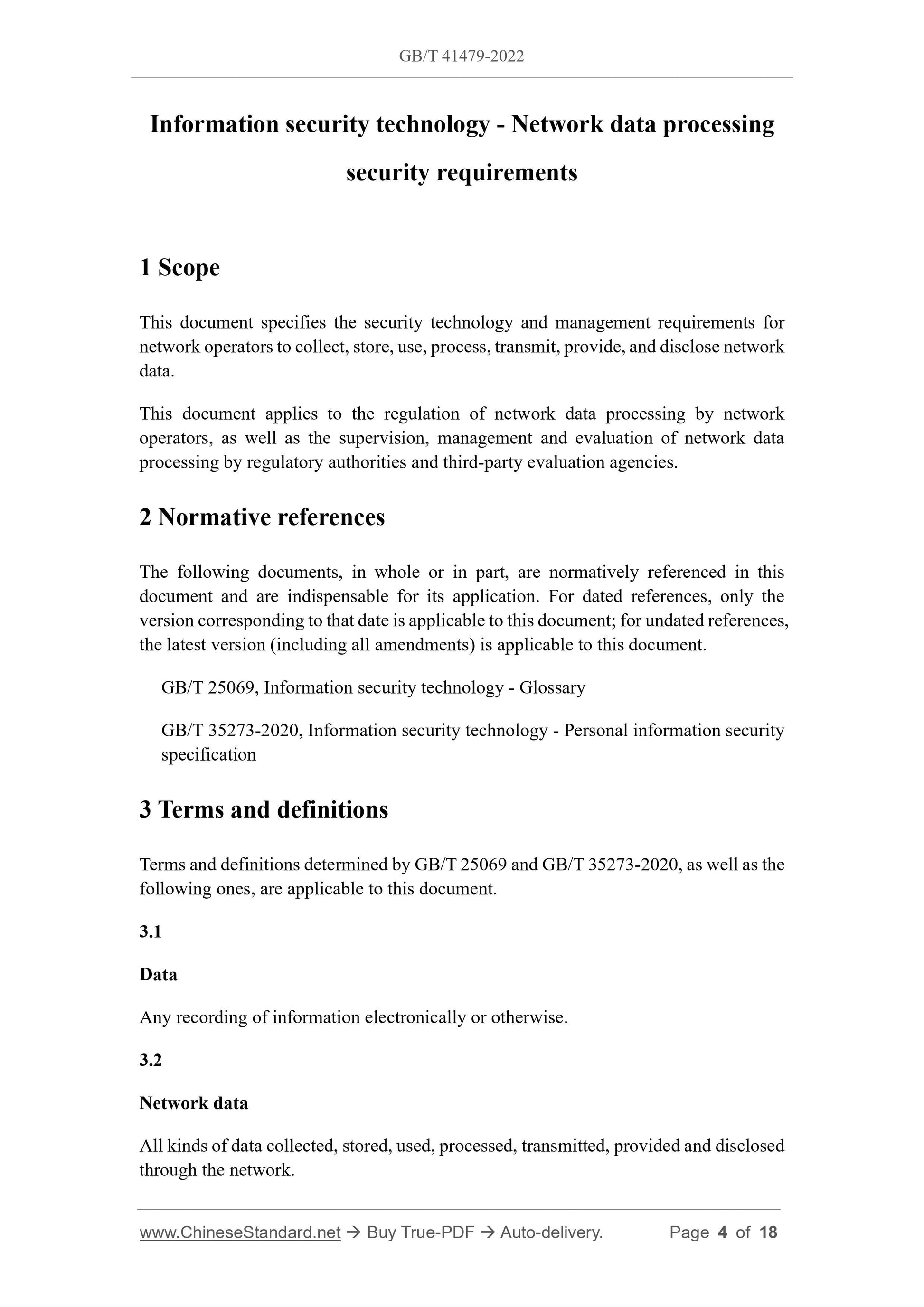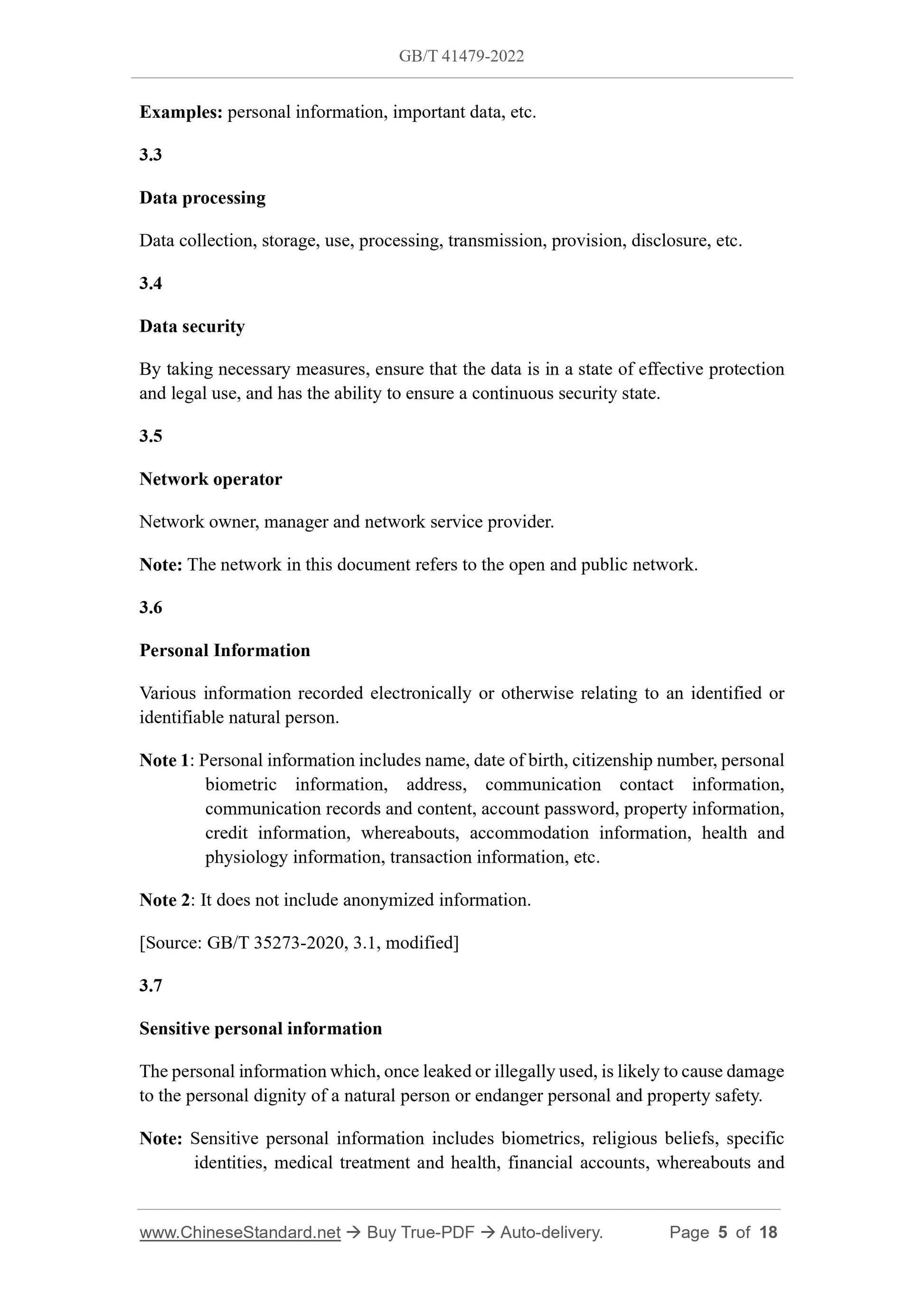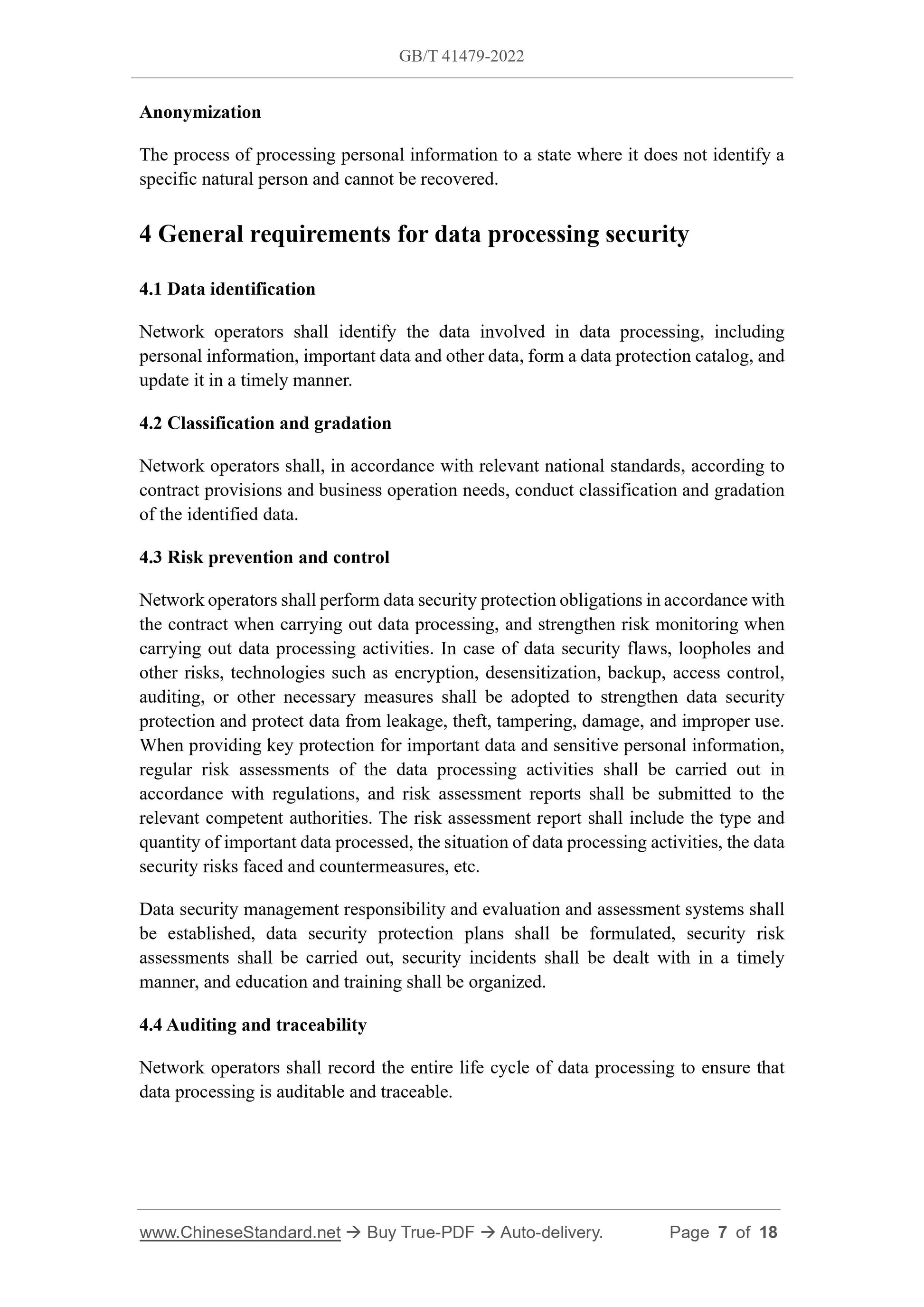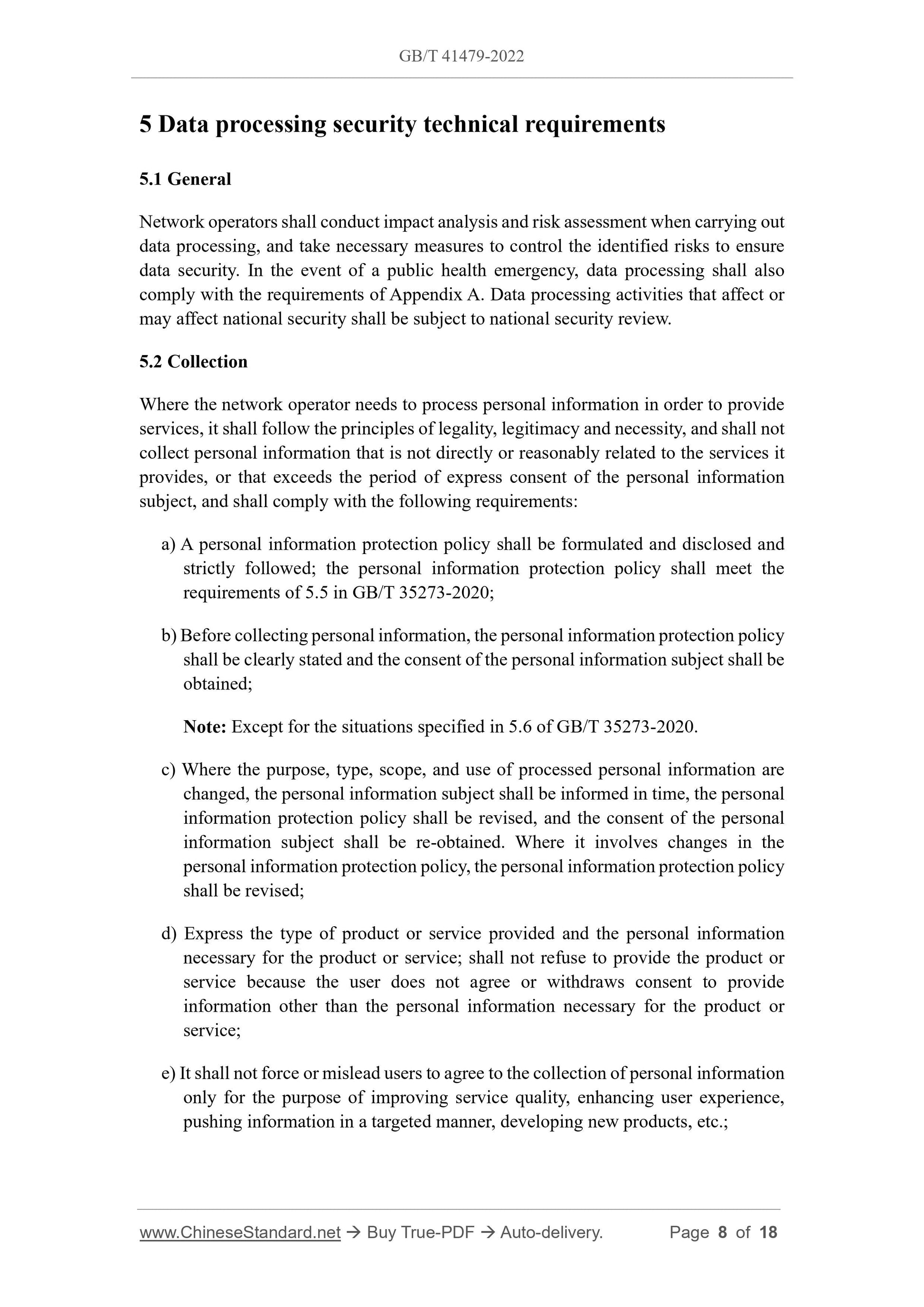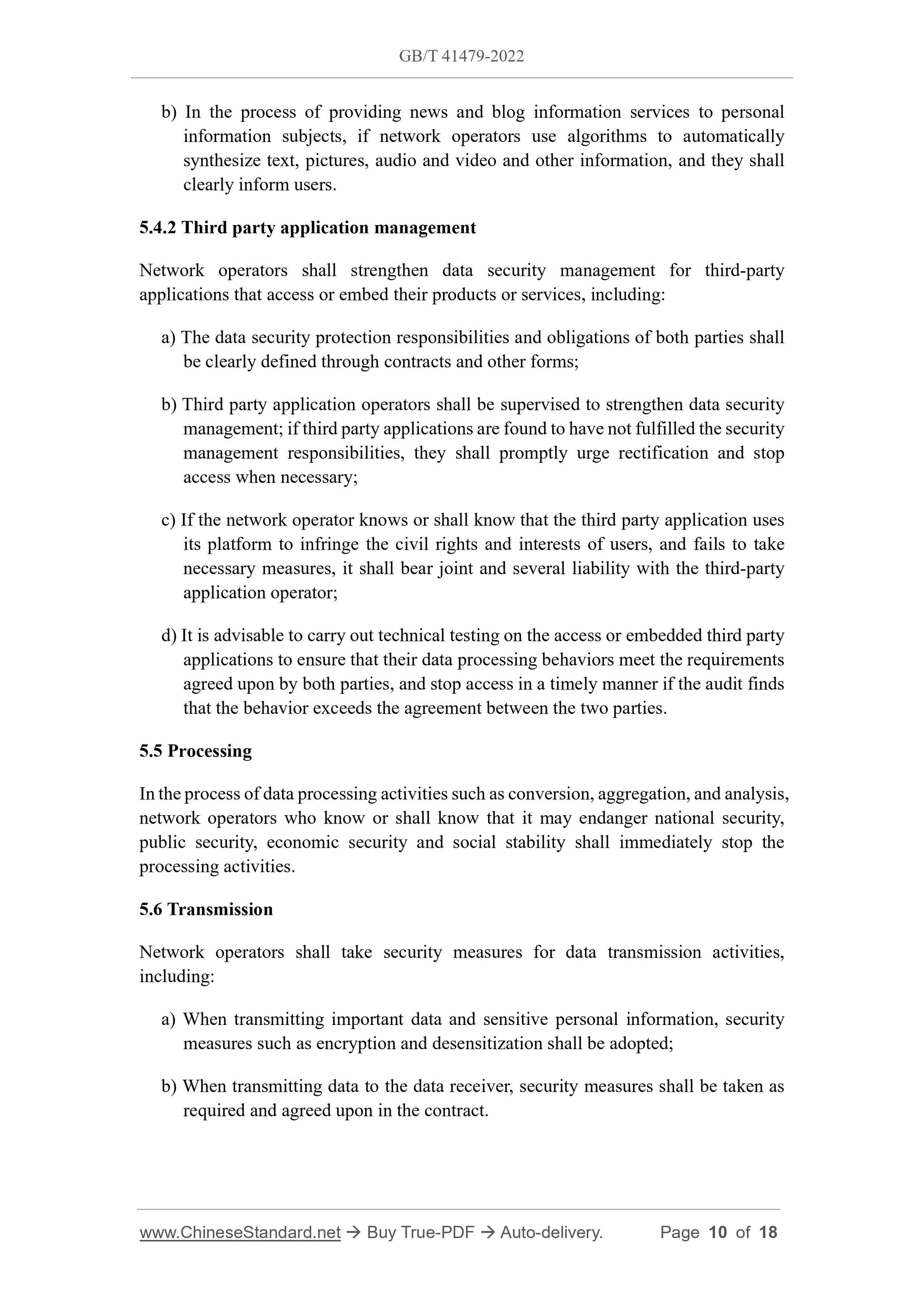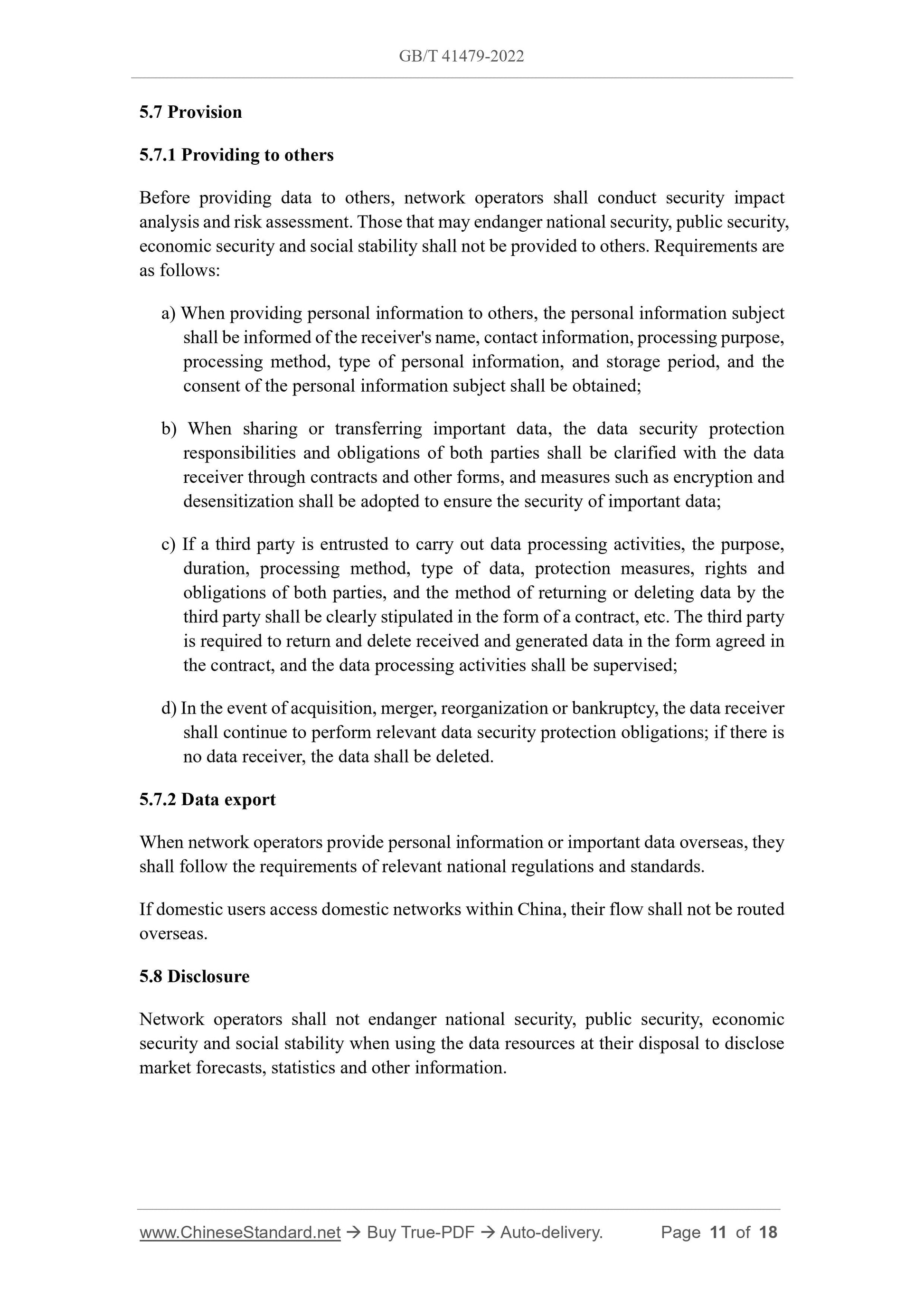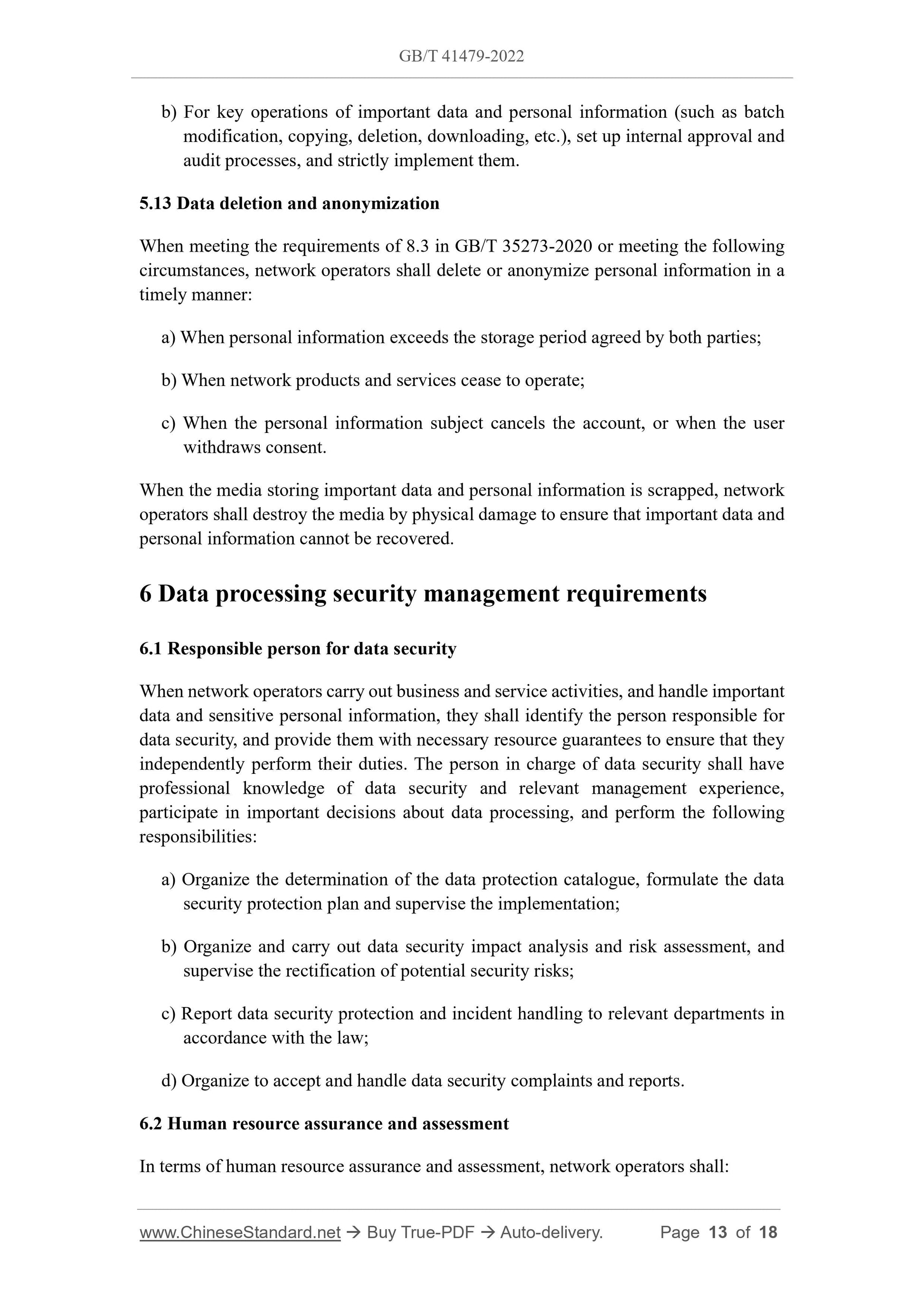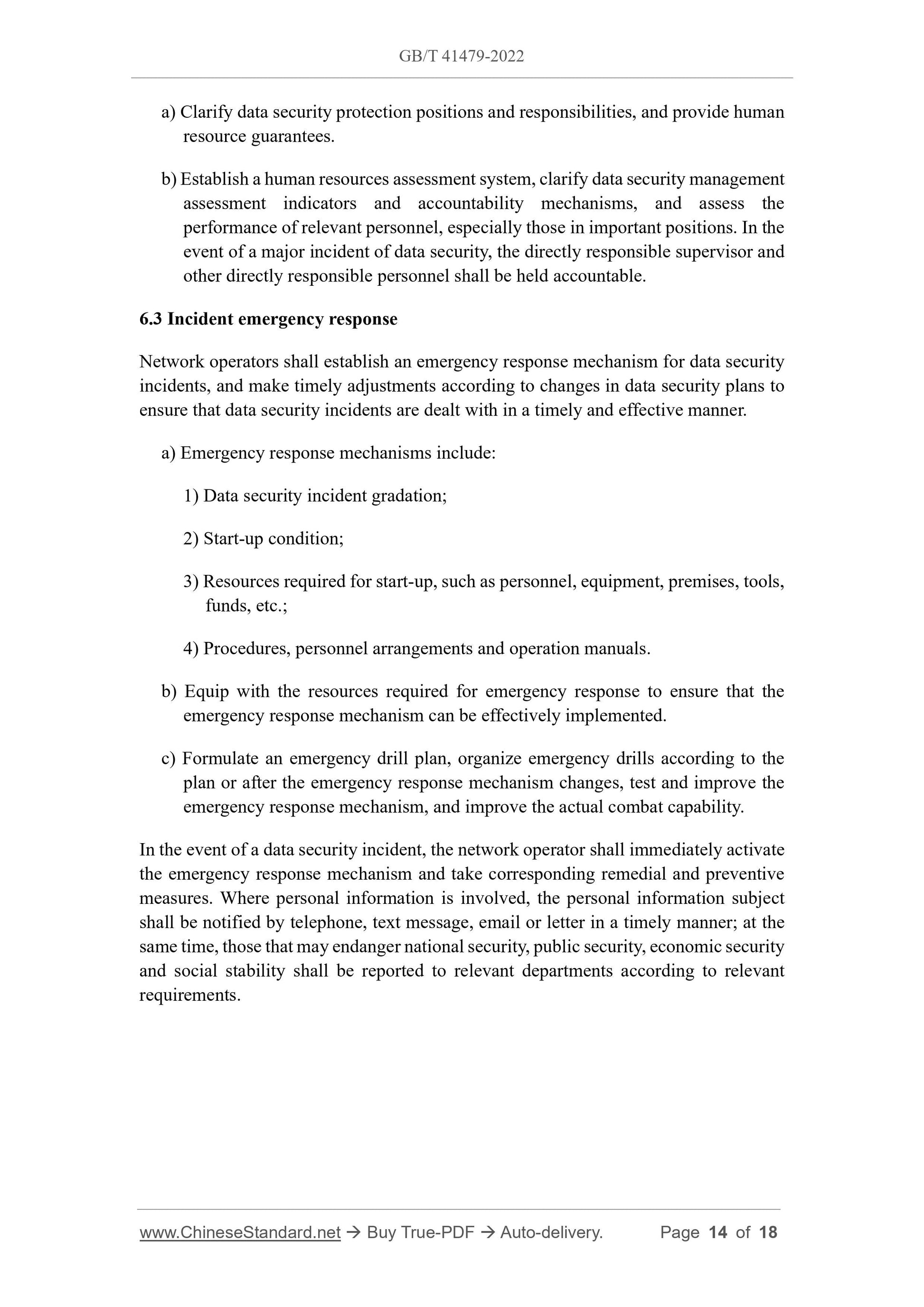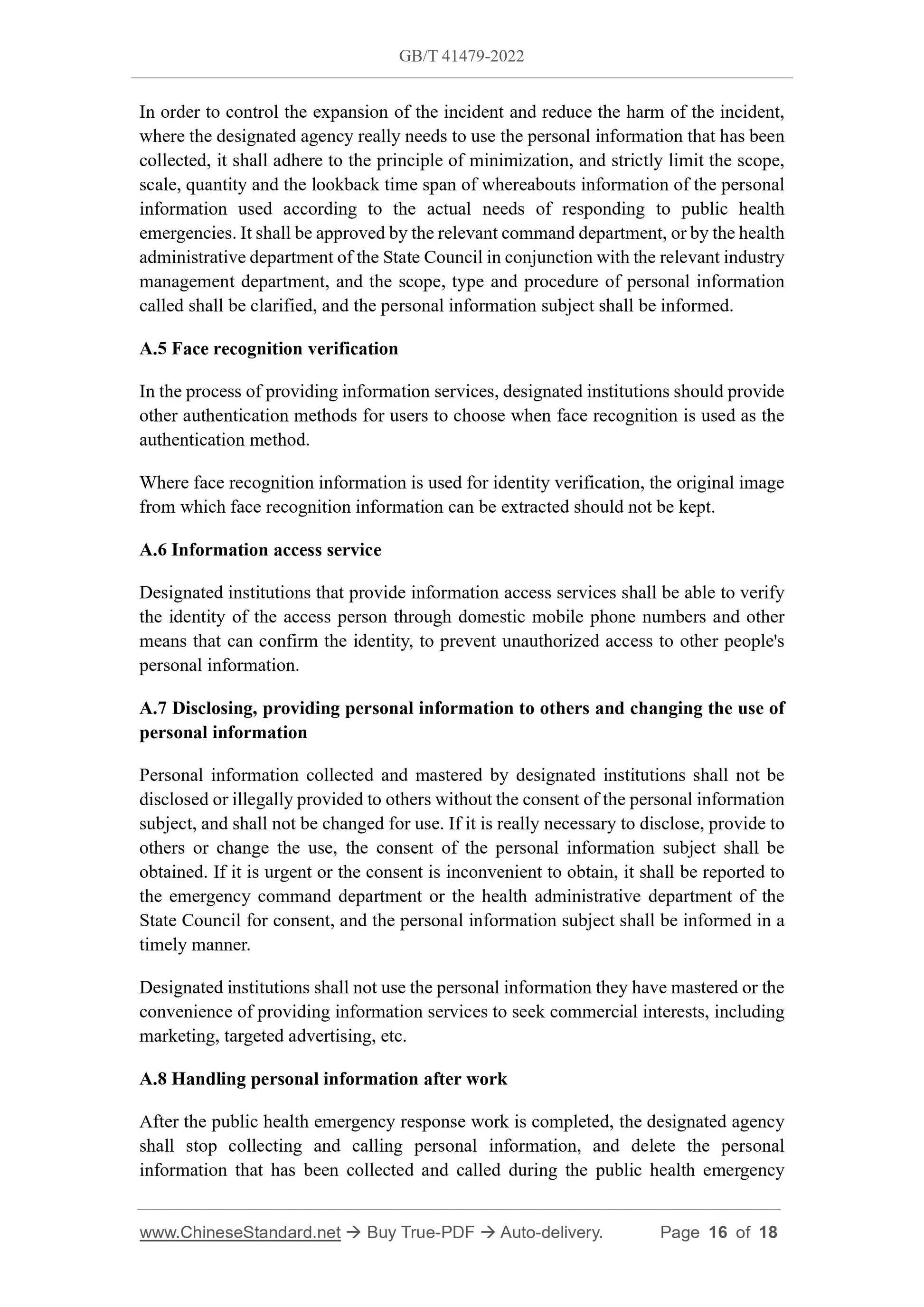1
/
of
11
www.ChineseStandard.us -- Field Test Asia Pte. Ltd.
GB/T 41479-2022 English PDF (GB/T41479-2022)
GB/T 41479-2022 English PDF (GB/T41479-2022)
Regular price
$260.00
Regular price
Sale price
$260.00
Unit price
/
per
Shipping calculated at checkout.
Couldn't load pickup availability
GB/T 41479-2022: Information security technology - Network data processing security requirements
Delivery: 9 seconds. Download (and Email) true-PDF + Invoice.Get Quotation: Click GB/T 41479-2022 (Self-service in 1-minute)
Newer / historical versions: GB/T 41479-2022
Preview True-PDF
Scope
This document specifies the security technology and management requirements fornetwork operators to collect, store, use, process, transmit, provide, and disclose network
data.
This document applies to the regulation of network data processing by network
operators, as well as the supervision, management and evaluation of network data
processing by regulatory authorities and third-party evaluation agencies.
Basic Data
| Standard ID | GB/T 41479-2022 (GB/T41479-2022) |
| Description (Translated English) | Information security technology - Network data processing security requirements |
| Sector / Industry | National Standard (Recommended) |
| Classification of Chinese Standard | L80 |
| Word Count Estimation | 13,188 |
| Issuing agency(ies) | State Administration for Market Regulation, China National Standardization Administration |
Share
